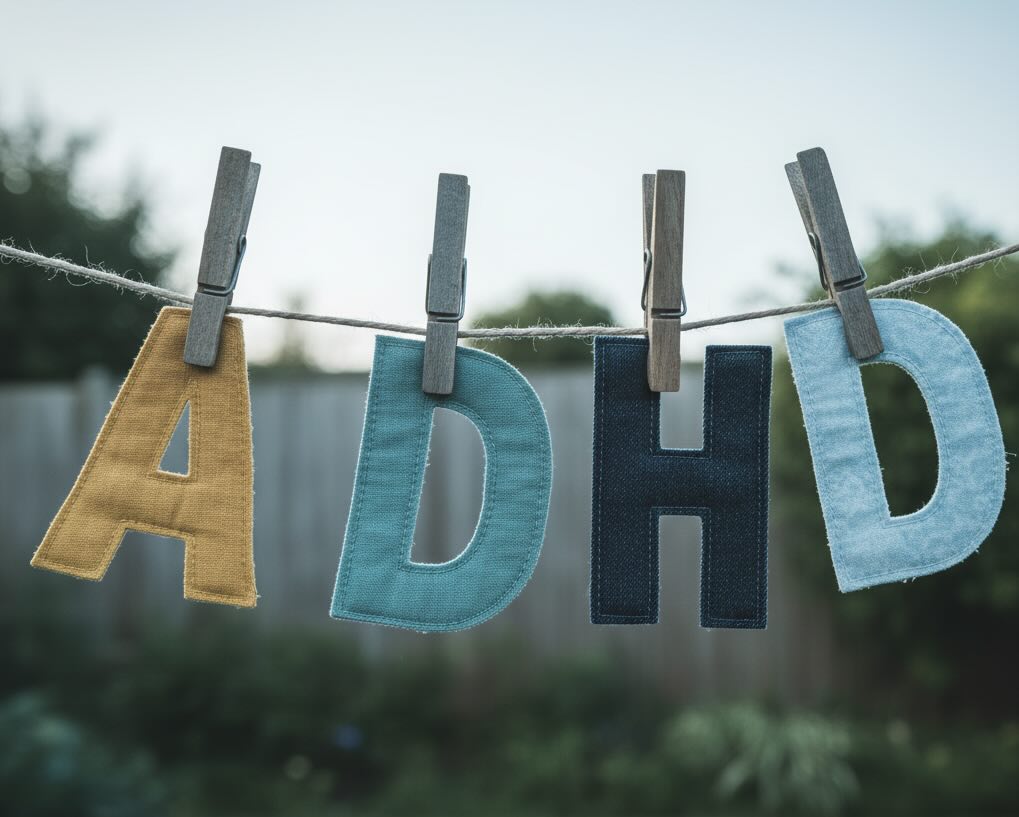What is Methamphetamine Dependence?
People may say “meth addiction”, “P habit”, “ice addiction” or “tweaking all the time”. Clinically, we use broader categories:
- In DSM-5-TR, methamphetamine is grouped with other amphetamine-type substances under Stimulant Use Disorder (amphetamine-type). The diagnosis is based on a problematic pattern of use leading to clinically significant impairment or distress, rated mild, moderate or severe depending on how many criteria are met in 12 months.
- In ICD-11, meth falls under “Disorders due to use of stimulants including amphetamines, methamphetamine or methcathinone”.
Not everyone who tries meth will develop dependence – but meth has a high addictive potential, especially with smoking, injecting, high-potency products and frequent use.
Methamphetamine Dependence Symptoms
Core features of problematic use
- Loss of control
- You plan to “just use on weekends”, but end up using most days or on binges
- You have strong cravings or urges to use
- Once you start, you find it very hard to stop until you run out or crash.
- Using more than you intended or for longer than you intended
- Moving from occasional lines or pills to smoking crystal, injecting, or using higher doses
- Repeatedly trying and failing to cut down or stop using.
- Life revolves around meth
- A lot of your time and energy goes into getting money, finding meth, using it, and recovering from use.
- You use it in dangerous situations (e.g. driving, unsafe sex, using alone, mixing with other substances).
- Continuing despite harm: You keep using even though you know it’s causing:
- You to not managing responsibilities at work, school or home
- Relationship breakdowns and family conflict
- Big financial or legal problems
- Worsening anxiety, depression, paranoia or psychotic symptoms
- Significant health warnings (e.g. chest pain, weight loss, infections)
- You to give up or cut down on activities you used to enjoy.
- You experience tolerance and withdrawal
- Needing more or stronger meth to get the same effect
- Feeling awful physically and emotionally when you try to cut down or stop (see below).
Physical and psychological effects of heavy meth use
Meth is a strong stimulant with wide-ranging effects. Long-term or heavy use is linked with:
Physical effects
- Rapid heart rate, raised blood pressure, irregular heartbeat
- High risk of heart attack and stroke, even in younger people
- Overheating, sweating, tremor and agitation
- Marked weight loss, appetite changes and malnutrition
- Dental problems (“meth mouth”), tooth decay, gum disease, jaw issues
- Skin sores and infections from picking or poor wound healing
- Increased risk of STIs and blood-borne viruses (HIV, hepatitis B/C) with unsafe sex or injecting
- Lung damage and breathing problems from smoking, vein damage and infections from injecting.
Psychological effects
- Intense euphoria, energy and drive when high
- Anxiety, panic, irritability, agitation or aggression
- Paranoia: “people are watching me/plotting against me”
- Hallucinations or delusions: including tactile hallucinations like “bugs under the skin”
- Risky, impulsive behaviours: spending, sex, driving, crime, violence
- Memory problems, trouble concentrating, feeling “frazzled” or “fried” mentally
- Mood swings: feeling high and superhuman while using, then flat, empty or hopeless on the come-down.
In some people, especially those with a personal or family history of psychosis or bipolar disorder, meth use is strongly linked to psychotic episodes and relapse.
Methamphetamine withdrawal
Stopping or sharply cutting down after regular meth use often leads to a crash and withdrawal. Symptoms are usually psychological but can be very intense:
Crash (hours to a few days):
- Extreme tiredness, sleeping long hours or feeling unable to get out of bed
- Increased appetite
- Low or empty mood, irritability, anxiety
- Strong cravings to use again.
Withdrawal (days, 1–2 weeks or more):
- Ongoing fatigue and “brain fog”
- Sleep disturbance: insomnia or oversleeping, vivid or disturbing dreams
- Depression, anxiety, restlessness
- Difficulty feeling pleasure (“nothing feels good anymore”)
- Strong cravings and feeling “pulled back” toward using.
For some, low mood and cravings persist for weeks or months, and withdrawal can be linked with high suicide risk. This is a major reason to have professional and social support in place.
How it can feel day-to-day
People with meth dependence often describe:
- Feeling trapped in a loop of using, crashing, promising to change, then being pulled back by cravings or stress
- Living with secrecy, guilt and fear of being “found out”
- Losing interest or capacity for things that once mattered – family, relationships, work, hobbies
- Struggling with memory, focus and planning; feeling like they’re not the person they want to be
- Feeling like life without meth is unimaginable or too painful – even if they can see the damage meth is doing.
When to seek help
Call emergency services or go to an emergency department immediately if you or someone else:
- Has chest pain, trouble breathing, collapse, seizure-like activity, or sudden weakness after meth or any other substance
- Has intense paranoia, hallucinations, confusion, or very agitated/violent behaviour
- Has thoughts of self-harm or suicide, especially during the crash or withdrawal phase, or talks about harming someone else
Contact a qualified health professional if:
- You’ve tried to cut down or stop but can’t, and meth is clearly affecting your health, work, finances or relationships
- You experience withdrawal symptoms when you reduce or stop
- You’re using meth alongside other substances (e.g. alcohol, benzodiazepines, opioids), which greatly increases risk
- You have heart disease, high blood pressure, epilepsy, pregnancy, or a history of psychosis, bipolar disorder or major depression and are using meth.
How Do You Assess Methamphetamine Dependence?
There’s no single blood test that “proves” meth dependence. Assessment is about patterns, consequences and context of what else is going on. Formal diagnosis typically involves a few steps:
- Start with a broad multi-disorder mental health screen: Because meth use interacts strongly with mood, anxiety, psychosis risk, ADHD, trauma, sleep and other substances. A multi-condition assessment tool, like Loffty, can help you:
- See how meth use sits alongside depression, anxiety, bipolar disorder, psychosis, ADHD, trauma and sleep problems
- Disclose other substances you use (alcohol, benzodiazepines, opioids, cannabis, or other stimulants)
- Disclose your mental health history and family history of anxiety, depression, bipolar disorder, psychosis or trauma
- Notice patterns between your use and symptoms (e.g. paranoia after binges, big mood crashes, sleep collapse)
- the impact of use on work, study, finances, relationships and legal issues
- Create a structured summary you can share with your psychologist, psychiatrist or addiction specialist.
This avoids both extremes: blaming everything on meth, or missing the role of meth in your mental health picture.
- Clinical interview: Your mental health specialist will consider whether you meet DSM-5-TR criteria for Stimulant Use Disorder, amphetamine-type and related diagnoses (like stimulant intoxication or withdrawal). They'll ask more questions about:
- How often and how much you use meth (and in what forms – smoking, injecting, pills)
- How your use has changed over time
- Your attempts to cut down or stop, and how withdrawal felt
- Physical health (heart, blood pressure, seizures, infections, pregnancy).
- Medical checks: Because meth can significantly affect the heart, brain and other organs, your clinician may:
- Check blood pressure, heart rate, temperature and oxygen levels
- Arrange an ECG (heart tracing), blood tests or scans if needed
- Screen for blood-borne infections if you inject or have had risky exposures
- Assess suicide risk and psychosis risk, especially in withdrawal.
How Do You Treat Methamphetamine Dependence?
The goal is to move from compulsive, harmful meth use to a life where you can function, connect and pursue what matters to you – ideally with abstinence from meth, and often from other high-risk stimulants.
Foundations: understanding and planning
Helpful early steps:
- Map your pattern
- Days per week using; typical amounts; route (smoked, injected, etc.)
- Contexts: alone, with certain friends, after getting paid, after arguments, on night shifts
- Clarify your goal
- Many people aim for complete abstinence; some start with harm reduction (e.g. fewer days, no injecting, no using alone, safer sex) on the way to stopping.
- Identify triggers and high-risk situations
- People, places, emotions, times of day, paydays, or other substances (especially alcohol) that make using more likely
A use diary for a week or two can be very helpful for you and your addiction specialist.
Psychosocial (talking and behavioural) treatments
Evidence consistently shows that psychosocial interventions are the core of treatment for methamphetamine use disorder:
Key approaches include:
- Cognitive Behavioural Therapy (CBT)
- Understanding how thoughts, feelings and situations link to meth use
- Building alternative coping skills (for stress, trauma, boredom, loneliness, sexual triggers)
- Planning for high-risk situations and early warning signs of relapse
- Motivational Interviewing / Motivational Enhancement Therapy (MI / MET)
- Exploring your own reasons for change (and for continuing) in a non-judgemental way
- Strengthening motivation and confidence
- Contingency Management (CM)
- Providing structured rewards (e.g. vouchers, prizes) for urine tests negative for meth and for meeting treatment goals
- Reviews and meta-analyses show CM is one of the most effective approaches for reducing stimulant use, including meth.
- Matrix Model and other structured programmes
- A multi-component outpatient programme developed specifically for stimulant use: CBT-based sessions, family education, urine testing, and encouragement to attend mutual-help groups.
These can be delivered in outpatient services, day programmes, residential rehabilitation, or via telehealth, depending on your needs and local services.
Medication
Currently, no medication has consistent, strong evidence to be labelled a standard treatment for methamphetamine use disorder, although many agents (e.g. bupropion, naltrexone combinations, psychostimulants, others) have been trialled.
Clinicians may use medication to:
- Manage withdrawal-related symptoms in the short term (e.g. severe insomnia or anxiety)
- Treat co-occurring conditions (depression, anxiety, ADHD, bipolar disorder, psychotic disorders)
- Support harm reduction (for example, opioid agonist therapy if opioids are also used).
Medication decisions should always be made with a qualified prescriber who understands your whole health picture.
Harm reduction and special situations
Harm reduction can save lives and buy time while you work on change:
- Avoid sharing injecting equipment; use needle and syringe programmes where available
- Don’t mix meth with other depressants (e.g. alcohol, benzodiazepines, opioids) – overdose risk is much higher
- Plan safer sex, including STI testing and contraception where relevant
- Try not to use alone – if you do, have someone who can check on you
Some situations need particular care and specialist input:
- Adolescents and young adults: developing brains are especially vulnerable to the cognitive and mental health effects of meth.
- Psychosis or bipolar disorder: meth significantly increases relapse risk; most guidelines recommend complete avoidance.
- Cardiovascular disease: heart disease, high blood pressure or stroke history greatly increases the danger of meth.
- Pregnancy and breastfeeding: meth can harm the developing baby; it’s strongly advised against during pregnancy and breastfeeding.
- Polysubstance use: treatment plans need to address all substances involved, not just meth.
Methamphetamine Dependence Research
How common is meth/amphetamine-type stimulant use disorder?
Global data tend to group meth with other amphetamine-type stimulants. Key points:
- Amphetamine-type stimulant use disorders (including meth) are a major contributor to global drug-related disability and premature death.
- Recent analyses show rising use and harm from stimulants worldwide, particularly in some regions where meth has become cheaper and more available.
- In some high-income countries, around 0.2–0.7% of adults may meet criteria for amphetamine-type stimulant use disorder in a given year, with higher rates in certain subgroups (e.g. men, people using multiple substances, some sexual networks).
Health and social impact
Methamphetamine dependence is associated with:
- Cardiovascular events (heart attack, stroke, arrhythmias)
- Injuries, violence and accidents
- Anxiety, depression, psychosis and cognitive difficulties
- Infectious diseases linked to risky sex and injecting practices
- Financial, housing and legal problems; family breakdown; productivity loss.
At the same time, many people with methamphetamine use disorder don’t receive treatment, which is one reason tools like Loffty exist – to make it easier to start the conversation.
What treatments seem to help?
Scoping and systematic reviews of methamphetamine treatment studies suggest:
- Psychosocial interventions (CBT, motivational approaches, Matrix Model, contingency management) are the current backbone of treatment.
- Contingency management consistently shows strong effects in promoting abstinence and reducing stimulant use.
- There is no single clearly superior medication yet; pharmacotherapies remain experimental or adjunctive.
- Combining approaches (e.g. CM and CBT/MET and mutual-help support) often works better than any one piece alone.
Overall, the research supports a hopeful message: with structured, evidence-based support, many people significantly reduce or stop meth use and rebuild health, relationships and functioning.
Books and Resources on Methamphetamine Dependence
Practical recovery guides
- Overcoming Crystal Meth Addiction: An Essential Guide to Getting Clean – Steven J. Lee, MD. A psychiatrist’s comprehensive guide to meth, its effects and recovery, written for the general public, with sections for both people who use and their families.
- Quitting Crystal Meth: What to Expect & What to Do – Joseph Sharp. A concise, experience-based handbook that walks you through the first year of recovery from meth, focusing on what you’re likely to feel and practical ways to cope.
- Crystal Meth: They Call It Ice – Mary F. Holley. A detailed, medically informed book describing the physical and psychological damage associated with meth, including brain imaging and case stories.
Memoirs and lived-experience perspectives
- Tweak: Growing Up on Methamphetamines – Nic Sheff. A raw, honest memoir of a young man’s addiction and recovery journey, later linked with the film Beautiful Boy.
- Beautiful Boy: A Father’s Journey Through His Son’s Addiction – David Sheff. A parent’s perspective on his son’s meth addiction, exploring love, fear, boundaries and hope.
- Methland: The Death and Life of an American Small Town – Nick Reding. A deeply reported look at how meth affects a rural community and the wider economic and social forces behind the epidemic.
Community and 12-step resources
- The Twelve Steps for Crystal Meth Addicts – NYCMA Books. A Crystal Meth Anonymous resource explaining the Twelve Steps as applied specifically to crystal meth addiction.
- Crystal Meth Anonymous literature (CMA / NYCMA websites). CMA offers pamphlets, step guides and story collections from people in recovery and their families, available via international and local CMA sites.




